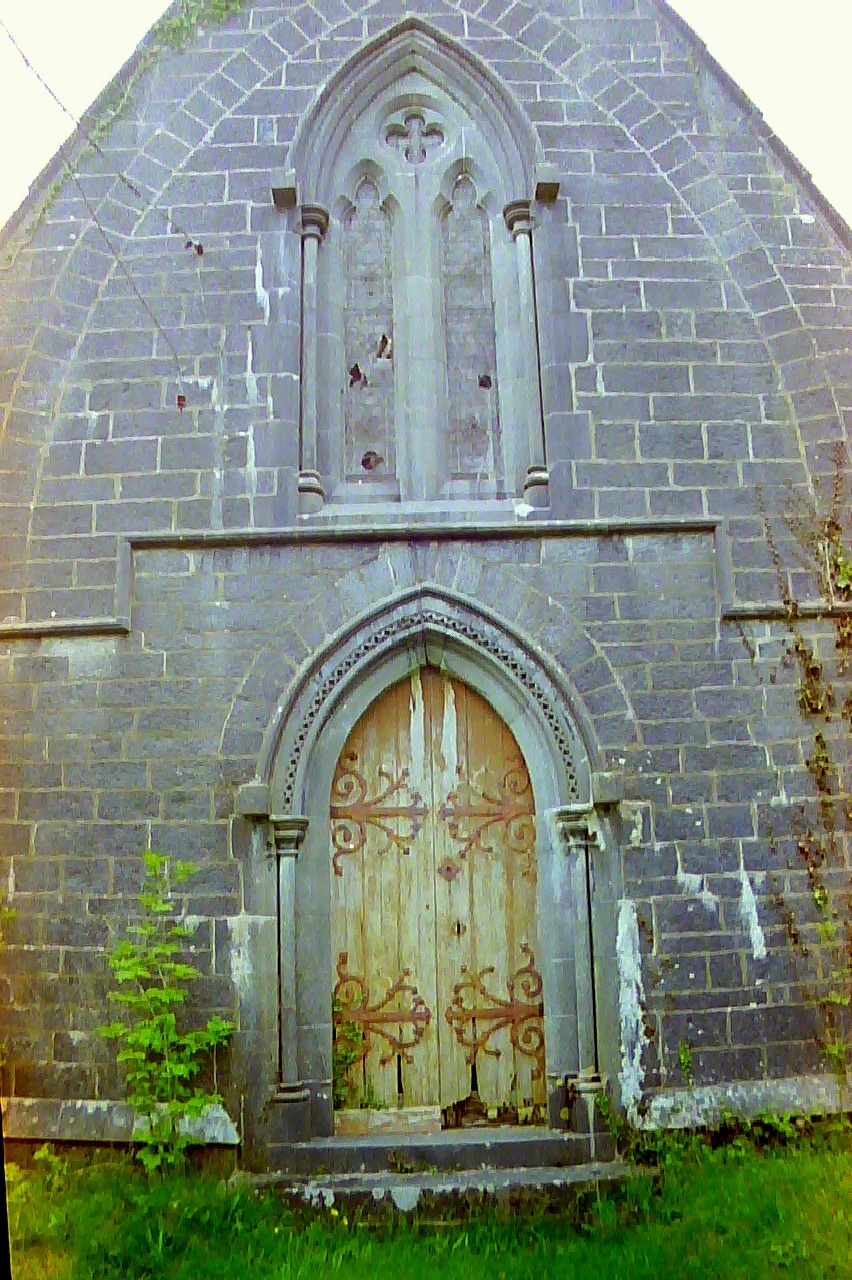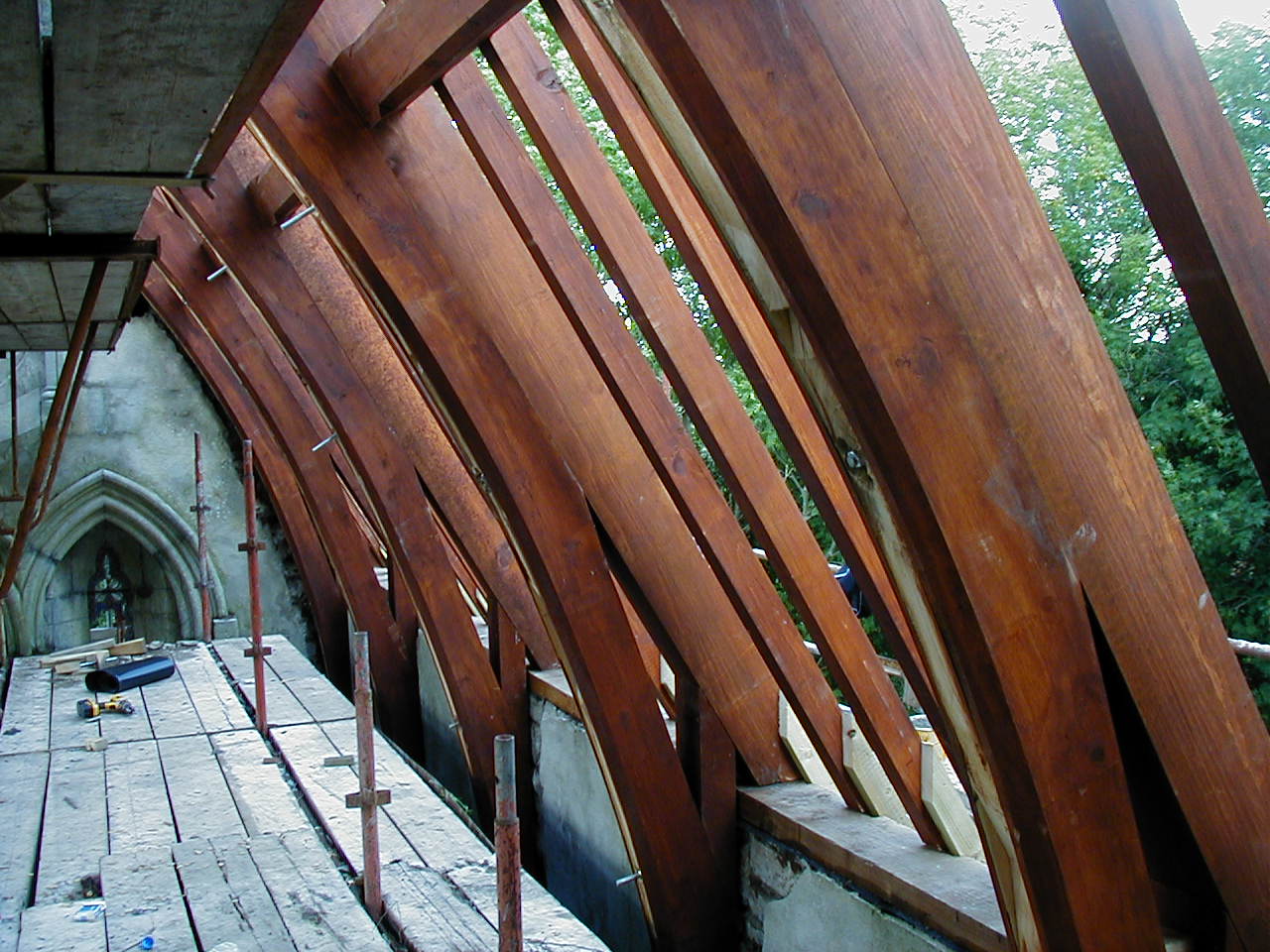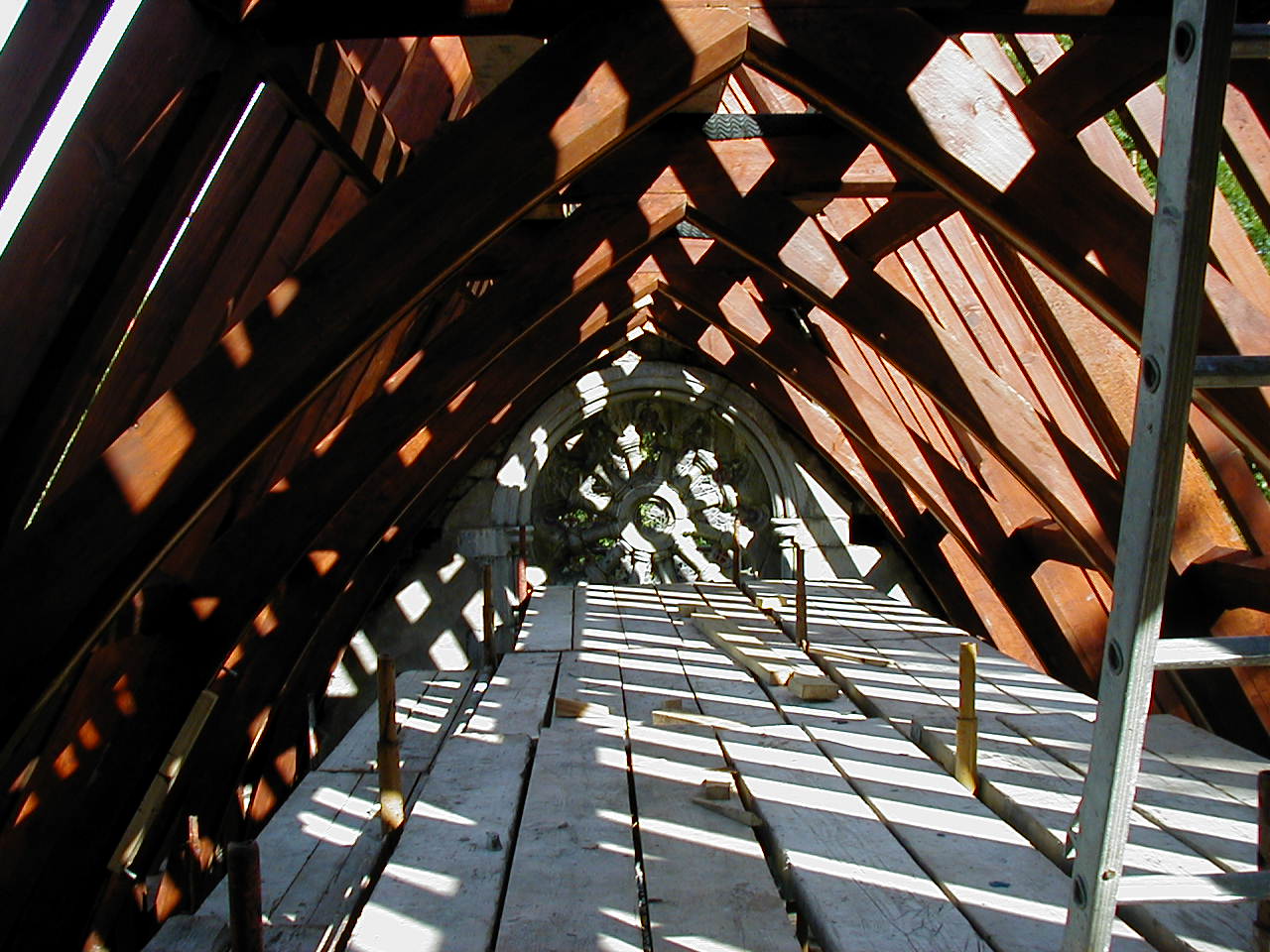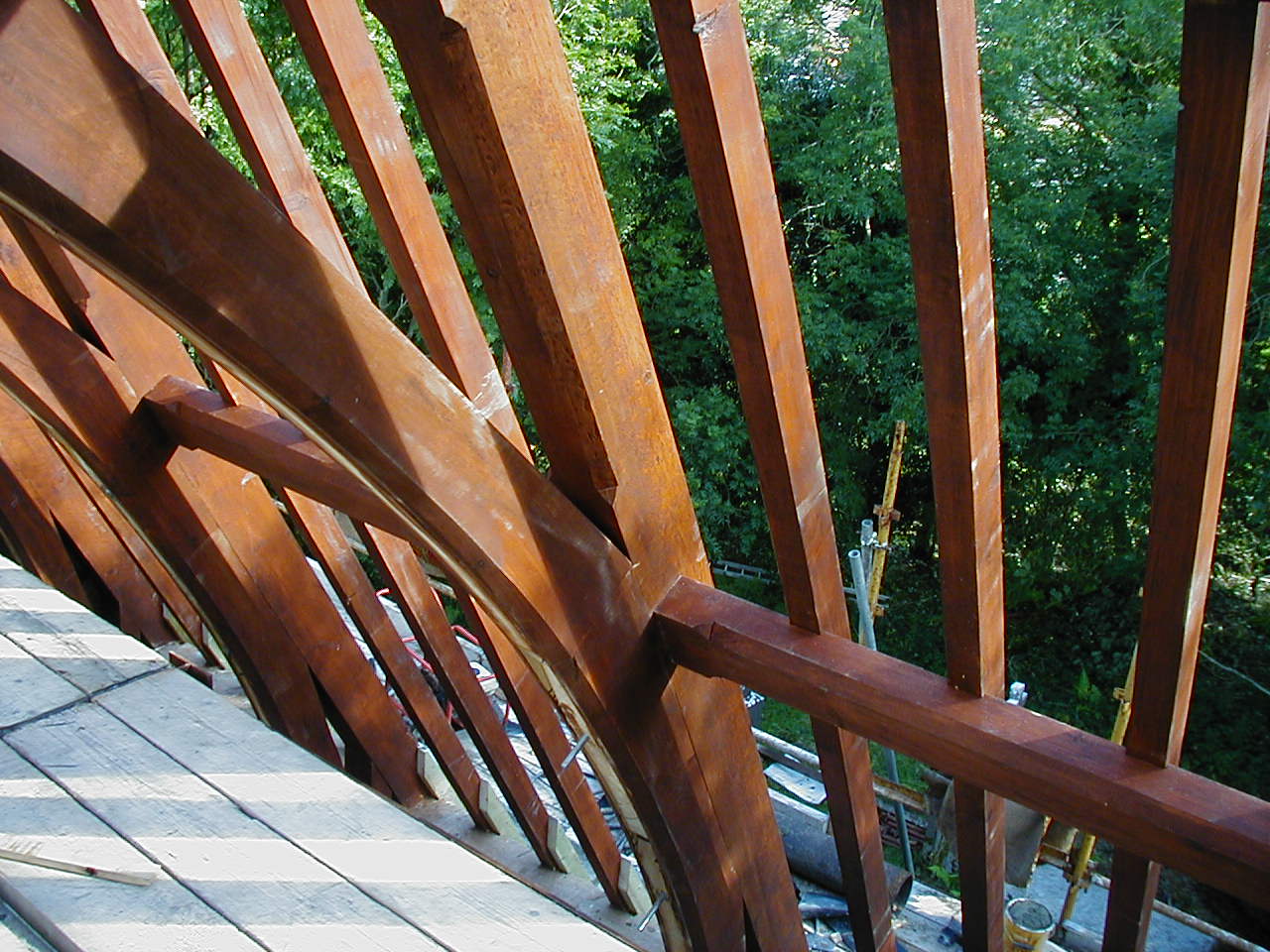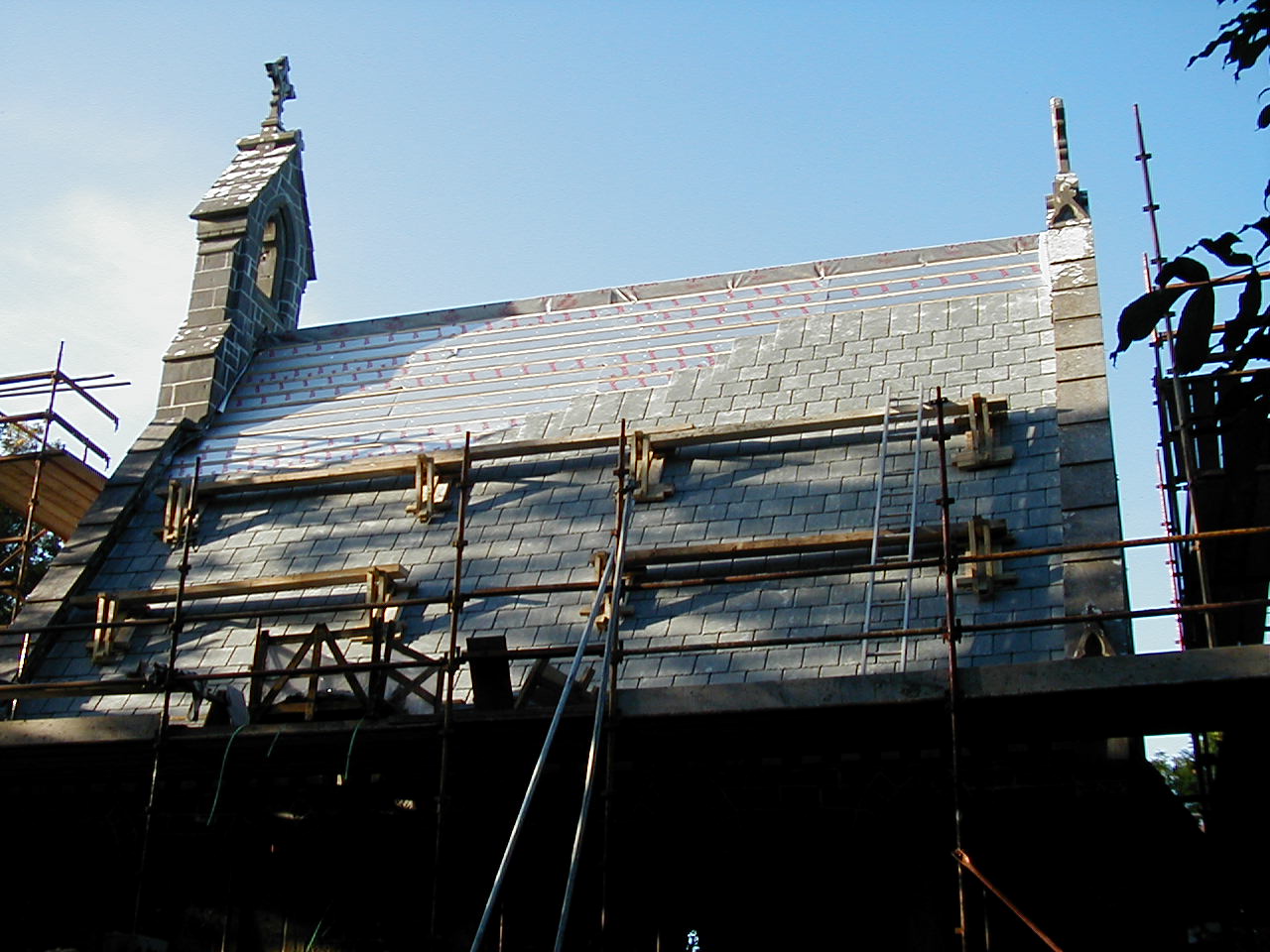The Founding of All Saints
“On our way back we stopped to see the very pretty little church mainly built by Lady Elizb. Clements. It is a little gem for Ireland standing in a cleared space surrounded by trees & capable of holding about 40 people. Good stained glass windows – handsome carved oak altar and reading desk & pulpit & low open benches. A reredos of illuminated text between altar & window, & the whole arrangement including a pretty font having ‘a good deal of the High Church in it’ – as the gamekeeper remarked who had fetched the key.” – Gertrude Clements, 18801.
Gertrude Clements’ (Mrs H.T. Clements) travel journal entry provides a rare insight into the original configuration of the interior of All Saints, built 1845-49 by Elizabeth Victoire Clements (1803 – 1892), an Anglo-Irish noblewoman and sister to William Sydney Clements, 3rd Earl of Leitrim (15 October 1806 – 2 April 1878). The Lords Leitrim, for generations prominent landholders in Donegal, Galway, Kildare, and Leitrim, played a significant role in the history of our region. Elizabeth Victoire Clements, an active patron of the community, also commissioned Clonbur House, and the Crane House, both still to be enjoyed in the centre of Clonbur.
The architect John Macduff Derick (1810 – 1859) is credited with creating the original architectural plan for All Saints; having offices in Dublin, Oxford, and London simultaneously. Known for Gothic revivalist architecture, he exhibited his design for All Saints at London’s Royal Academy of Art and Dublin’s Royal Hibernian Academy in 1846, the caption of his drawing reading: ‘Episcopal chapel now erecting. For Lady E.S Clements.’.
The small church was consecrated on the 17th of March 1849 by the Right Reverend Thomas Plunket, the Bishop of Tuam, Killala, and Achonry. Shortly thereafter significant changes occurred in the Church of Ireland, including the 1868 disestablishment, prompting a substantial restructuring of its governance. Gertrude Clements’ journal entries document the declining condition of the church in 1880, 31 years after its consecration:
“Her [Elizabeth V Clements] good works are to the eye vanishing away, for the church looks uncared for, & has only evening service in it, now belonging to Cong – but we cannot see below the surface & possibly, church, school, & example are doing their works in the hearts of men, and women many a league away”2.
Church records indicate that the congregation served by All Saints was modest by the mid-20th century. In 1931, the congregation fluctuated between 5 and 7 people. The 1950s showed a similar pattern, with 5-6 people attending regularly and 10-12 people during July and August3. The last service was held in 1956.
By the end of the 20th century, the church was in a state of disrepair, with sections of the roof deteriorating and several original stained glass windows lost or damaged.
1 Brigid Clesham, “A Visit to the Maam Valley in 1880,” The Galway Archaeological and Historical Society 67 (2015): 167.
2 Ibid.
3 Parish of Ross (Church of Ireland), information extracted from records in Representative Church Body Library, Dublin, by Brigid Clesham, Archivist, 2012.
The Restoration of All Saints
“Architecture may be described as a synthesis of art and technology, which reflects, in outward form, wealth or poverty, skills and craftsmanship, the pattern of peoples living, their hopes and ideas and even their social development. We are indeed fortunate that, throughout Ireland, there still remain many very fine examples of our architectural heritage… We are at present in the process of re- discovering the individual history and story attached to a small Church of Ireland church in Clonbur, Co. Galway.” – Roger Laundon – Clonbur Magazine, Irisleabhar Na Fairche 1994.
Architect Roger Laundon played a central role in breathing life back into All Saints, embarking on a 19-year journey of challenges, innovation, and unwavering commitment. He provided critical guidance for restoration implementation, securing crucial funding, and to negotiating a lease with the Church of Ireland.
The foundation for the restoration efforts began in 1999 when “Ionad Cultúr agus Dearadh an Fháirche CFTR,” a company limited by guarantee, was established. Chaired by Roger Laundon, R.I.B.A., Architect, with invaluable support provided by Mary Egan and Barry Lambe,and in later years, Patricia Walsh. This organisation was entrusted with the task of overseeing the church’s refurbishment and the development of a Cultural and Design Centre. Planning permission was secured that same year, but unforeseen lease complications delayed the project. Subsequently, in 2003, All Saints was added to the Record of Protected Structures (RPS 566), necessitating the reapplication for planning permission.
In 2004, negotiations with the Church of Ireland’s Representative Body culminated in a significant milestone—a 20-year lease agreement. The early 2000s delivered comprehensive groundwork, including a Feasibility Study and Business Plan, planning permission acquisition, and ambitious fundraising campaigns. Land was purchased to accommodate a much-needed car park.
The year 2008 marked a defining and strategic point when the organisation obtained charitable status. Through substantial grants from the Department of Environment and Údarás na Gaeltachta, work finally commenced on cleaning the building’s timber and stonework, accompanied by the installation of a replica roof faithful to the original design aesthetic, which was completed in 2009 by Kilbride Sand & Gravel.
In 2012, the project received a generous donation which funded the replacement of the windows; unfortunately the original stained glass was beyond repair. All Saints – although not yet fully complete – began to host a range of events, from art exhibitions to wedding ceremonies. The finishing touches to the restoration were made in 2016.
Fortunately, Roger Laundon was able to see the conclusion of the project before passing away in May 2017, a significant loss for All Saints Heritage Centre and the community.
All Saints Today
In 2018 community-based committees and focus groups were formed to design the strategy by which All Saints Heritage Centre would fulfil its charitable remit. By 2019 a comprehensive strategy was in development to deliver programming for our charitable sectors: Heritage, Culture, Gaeilge, and the Arts.
Today, All Saints Heritage Centre – operated by the charity Ionad Cultúr agus Dearadh An Fháirche CFTR – is a place to illuminate the present, nourish our understanding of the past, and inspire visions of our future through diverse and engaging programming. Our mission and goals are managed and driven by a dedicated Board, and teams of volunteers in collaboration with our cultural and funding partners.
Our Board of Directors is committed to developing access to and support for Culture, Heritage, Gaeilge, and the Arts within County Galway and the West of Ireland. All Saints Heritage Centre is well positioned to be a centre of excellence for creative and heritage practices connecting an underserved population of artists, performers, craftspeople, authors, and academics with their respective audiences in a relationship that benefits creators and community mutually. We deliver high-quality programmes and experiences that nurture practice development, engagement, and access to heritage, Irish language, culture, and the arts.
Today, All Saints Heritage Centre is a place for you.

Bibliography
Brigid Clesham, “A Visit to the Maam Valley in 1880,” The Galway Archaeological and Historical Society 67 (2015): 167.
Laundon, Roger. 1994. “All Saints Church, Clonbur.” Clonbur Magazine, Irisleabhar Na Fairche, December 1994.
Leslie, Canon J. B. 2008. Clergy of Tuam, Killala and Achonry. Edited by Canon D. W. T. Crooks. Ulster Historical Foundation.
Malcomson, A. P. W. 2010. The Clements Archive. Dublin: Irish Manuscript Commission.

